Key takeaways:
- Choose cryptocurrency platforms based on user experience, security features, and community feedback to ensure trust and safety.
- Prioritize wallet security with robust encryption, two-factor authentication, and regular updates to protect assets from potential hacks.
- Understand the different types of wallets (hardware, software, web) and their associated security levels to make informed choices.
- Establish strong security habits like using unique passwords, regular software updates, and device security to enhance overall protection.
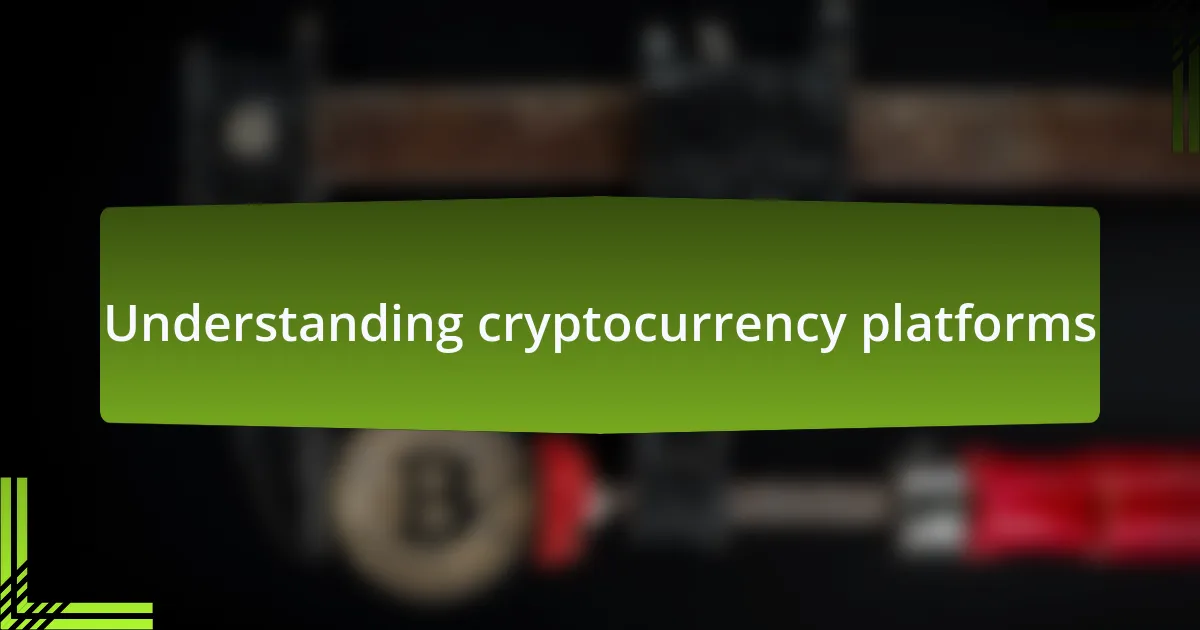
Understanding cryptocurrency platforms
Cryptocurrency platforms serve as digital marketplaces where traders can buy, sell, and exchange cryptocurrencies. During my exploration of these platforms, I found myself captivated by the sheer variety available—from popular exchanges to smaller, niche ones. Have you ever wondered what makes one platform stand out from another? For me, it often comes down to user experience and security features.
These platforms not only facilitate transactions but also offer a range of tools for investors, like charts for market analysis and wallets for secure storage. I remember my first transaction vividly; the rush of purchasing my first Bitcoin was exhilarating but also daunting. It raised a question for me: can I truly trust the platform I’m using with my funds? The answer lies in thoroughly researching the site—looking at its security protocols and community feedback.
Security is critical, especially as I hear about breaches and hacks within the crypto space. I’ve made it a habit to read user reviews and scrutinize a platform’s history before diving in. Have you checked how often a platform updates its security measures? In my experience, a platform’s commitment to safeguarding user information can be a significant deciding factor in choosing where to trade.
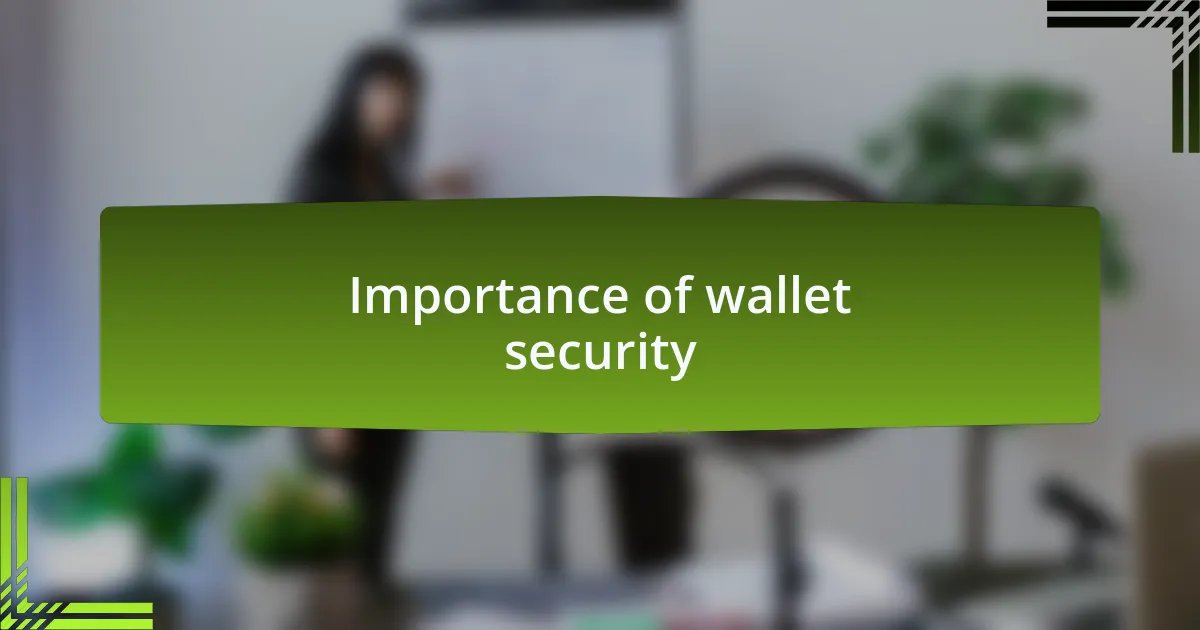
Importance of wallet security
When it comes to wallet security, I can’t stress enough the importance of treating your crypto assets with the same caution you would a physical wallet filled with cash. I once learned this lesson the hard way when a friend of mine lost access to his funds due to a phishing attack targeting his wallet’s private key. This incident opened my eyes to how easily someone can lose their investments if they aren’t vigilant about security measures.
I often think about how wallet security is not just a personal responsibility but also a matter of trust in the cryptocurrency ecosystem. Holding my assets in a wallet that offers robust encryption and two-factor authentication gives me peace of mind. Isn’t it reassuring to know that even in the digital realm, there are layers of protection that can keep my hard-earned money safe from prying eyes?
Without effective security, the thrill of trading in cryptocurrencies can quickly turn into a nightmare. The countless horror stories I’ve encountered serve as a warning: hackers are always on the prowl for weak links. Investing in good wallet security isn’t just about avoiding loss; it’s about creating a safer environment for your trades and ensuring that your journey in the world of cryptocurrencies is positive and rewarding.
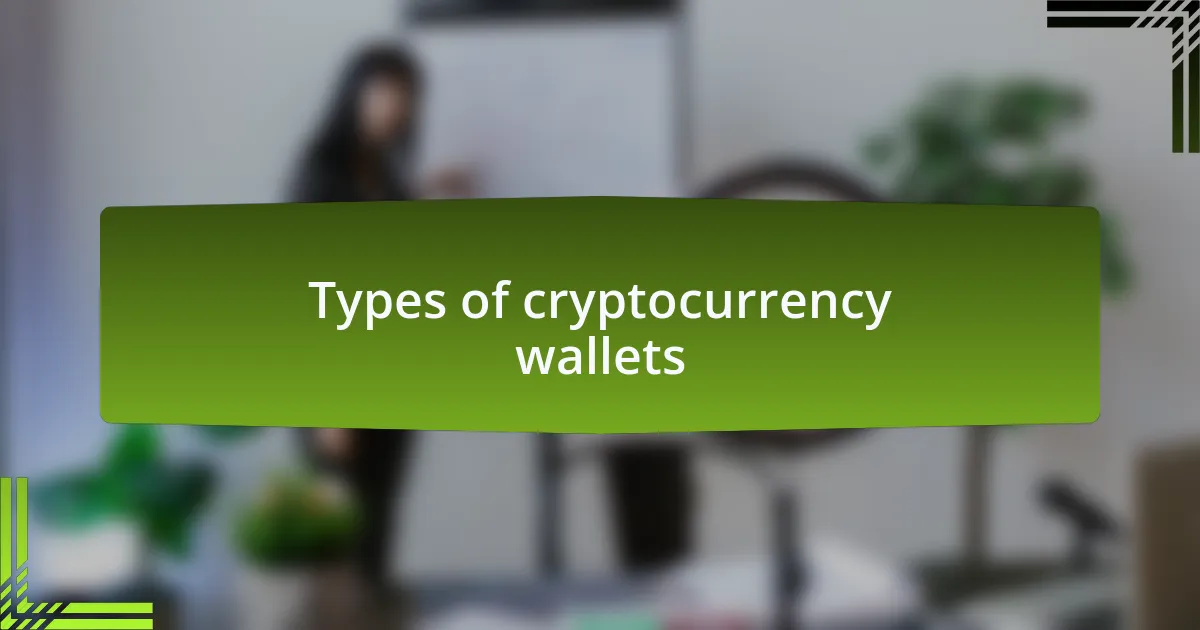
Types of cryptocurrency wallets
When exploring the different types of cryptocurrency wallets, it’s essential to understand the major distinctions to find what suits you best. I remember my first encounter with a hardware wallet, and how it felt like having a high-security vault at home. These wallets store your private keys offline, making them less vulnerable to online attacks, which really helped me feel secure during my early trading days.
On the other hand, I’ve also used software wallets, which are more convenient for everyday transactions. I often found myself pulled toward mobile wallets, like the one on my phone—I could send and receive crypto quickly without a second thought. However, learning to back them up properly was a lesson I took to heart, especially after reading about friends who lost access simply due to a device failure or loss.
Then, there are web wallets, which are incredibly user-friendly and ideal for those just starting out. I’ve used a few of these on exchanges, but I always hesitate before leaving substantial amounts there for too long. It’s a bit like trusting a bank; while they offer convenience, I can’t shake the feeling of vulnerability, knowing my funds are only as secure as the platform’s protocols. How do you weigh convenience against security in your own experience?
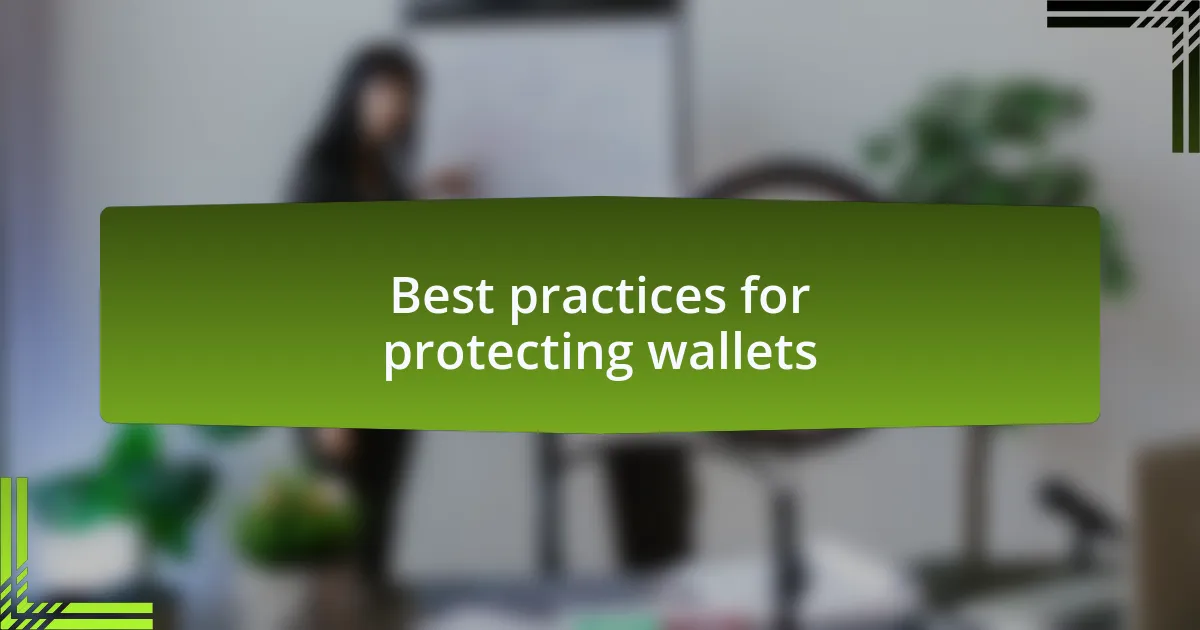
Best practices for protecting wallets
When it comes to safeguarding my wallet information, I always make it a point to use strong and unique passwords. I learned the hard way that reusing the same password across multiple sites can lead to some serious headaches—like when my account was compromised because I was too lazy to create a new one. Now, I use a password manager, which not only helps me keep track of all my passwords but also generates complex ones that would be a nightmare for anyone trying to hack into my accounts.
Enabling two-factor authentication (2FA) is another crucial step I never skip. For instance, after setting up 2FA on my main exchange account, I felt a wave of relief wash over me. It’s almost like having a second lock on my front door. Even if someone manages to steal my password, they still need that second piece of information to get in. Have you ever thought about how much safer 2FA can make you feel?
I also pay close attention to the devices I use to access my wallets. There was a time I accessed my crypto wallet on a friend’s public Wi-Fi without a second thought, only to find myself feeling anxious afterward. Since then, I always use a virtual private network (VPN) when I’m on unsecured networks. This extra layer of security helps to keep my sensitive information hidden from prying eyes. It’s a small step, but it brings me peace of mind, knowing I’m doing everything I can to protect my assets.
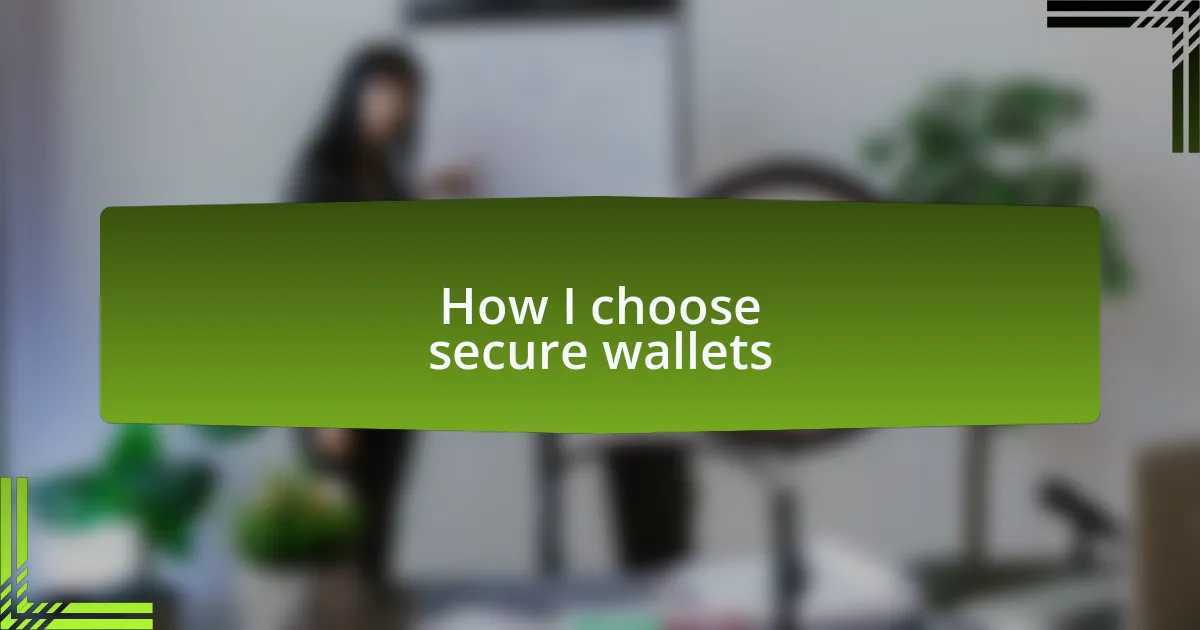
How I choose secure wallets
When I’m choosing a secure wallet, one of the first things I look at is the wallet’s reputation and user reviews. A friend once recommended a wallet that seemed appealing at first glance, but after doing my own research, I found numerous complaints about its security vulnerabilities. Trusting a wallet with my hard-earned cryptocurrency is not something I take lightly—I need to feel confident that others have had positive experiences.
I also prioritize wallets that offer robust encryption methods. I remember the first time I realized just how critical encryption is; I had just set up a wallet that boasted top-notch security features. The peace of mind that came with knowing my private keys were encrypted felt like a warm blanket on a cold night. Have you ever experienced that sense of security when you know your assets are protected?
Lastly, I consider the wallet’s backup and recovery options. Early on in my crypto journey, I failed to back up a wallet properly, and it haunted me for weeks. Now, I only choose wallets that provide clear instructions and secure backup options, because losing access to my funds is a nightmare I’ve no interest in revisiting. It’s those little details that can make all the difference between feeling secure or searching for a lifeline.
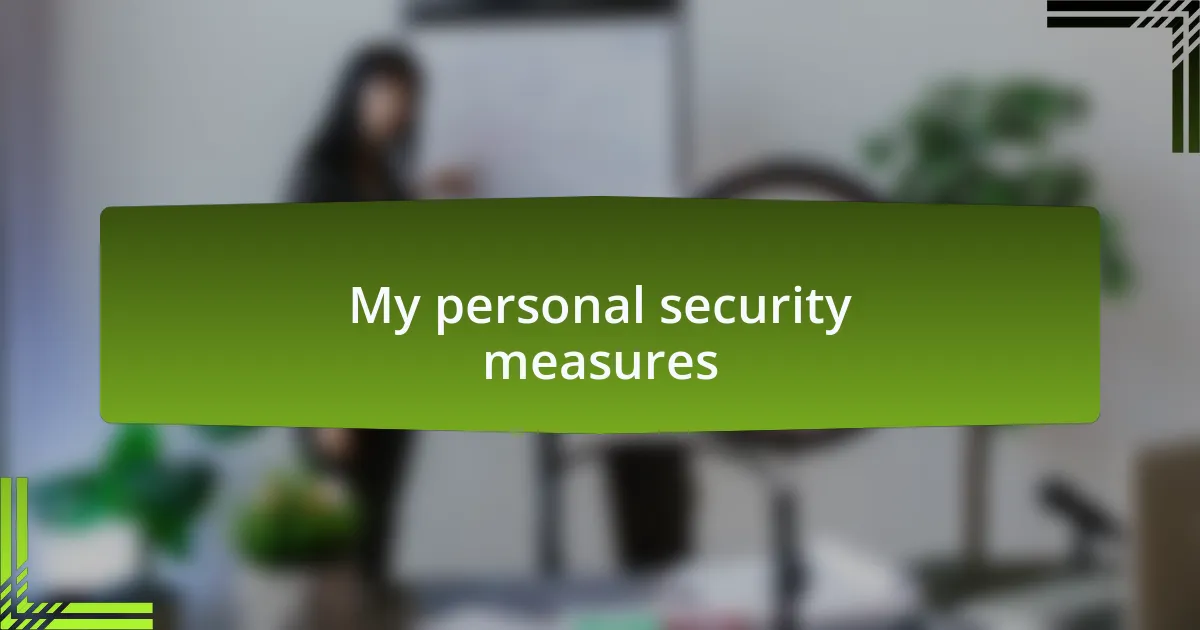
My personal security measures
When it comes to safeguarding my wallet information, I take a multi-faceted approach that makes me feel more secure. One measure I always include is enabling two-factor authentication (2FA). I remember a time when I didn’t use 2FA on a platform, and it left me feeling vulnerable. The added layer of verification is like having an extra lock on my front door—just a little more security that greatly eases my mind.
I also maintain a regular routine of changing my passwords. I can’t stress how crucial this has been for me. There was a period when I used the same password for too long, and it felt like a ticking time bomb. Now, I use a password manager to create and store complex passwords. Have you ever had that moment of panic when you realize your password might not be as secure as you thought?
Additionally, I always keep my devices updated with the latest software. I recall the relief I felt when a friend’s outdated operating system was exploited, leading to a breach. After witnessing that incident, I made it a point to ensure my devices are consistently updated. Keeping software current is like maintaining my car; it just makes sense to avoid bigger issues down the road.
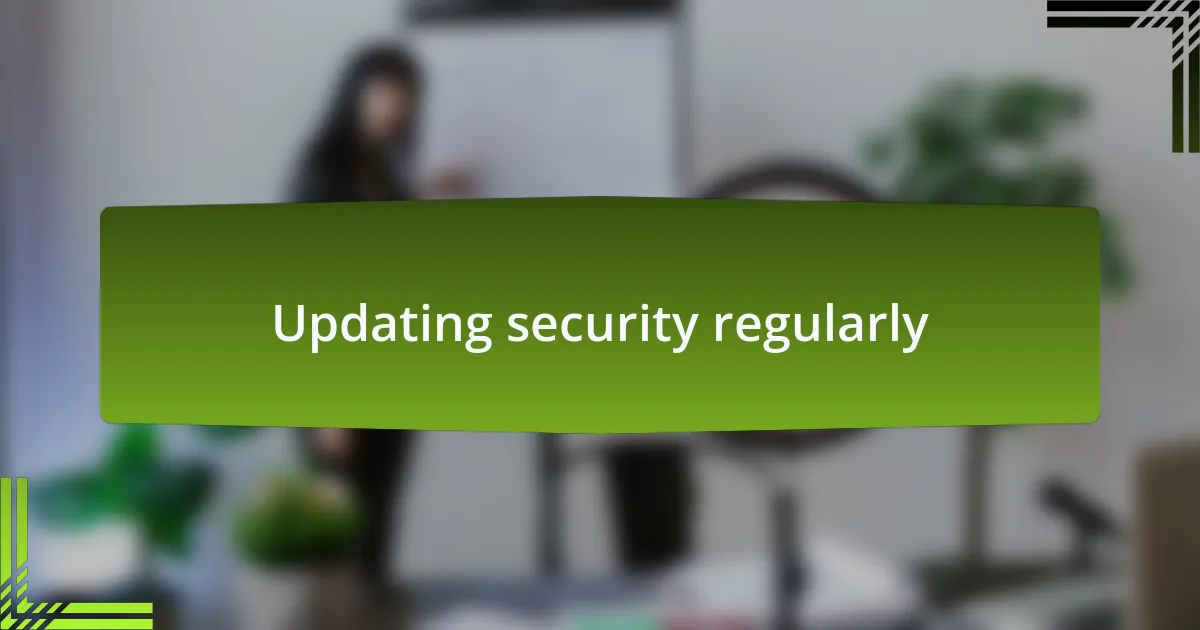
Updating security regularly
Updating security regularly is a cornerstone of safeguarding wallet information. I’ve learned this the hard way; there was a time I neglected regular updates and faced a frustrating security scare. Ever had that heart-dropping moment when you realize your software is outdated? Trust me, it’s not a pleasant feeling when you think about all your sensitive information hanging by a thread.
I’ve established a habit of checking for updates weekly, and it’s surprisingly easy to stay on top of. I remember a workshop I attended where an expert mentioned how many breaches happen due to outdated software. That really struck a chord with me. After that, I made it a personal mission to prioritize updates, feeling empowered knowing I’m actively reducing my risk.
Incorporating automatic updates has also made my life easier. It feels like setting up a safety net that works in the background. I often wonder how many people miss out on this simple step; it’s almost as if we forget that neglecting updates is akin to leaving a window open in a storm. For me, the peace of mind that comes from automatic security enhancements is invaluable.